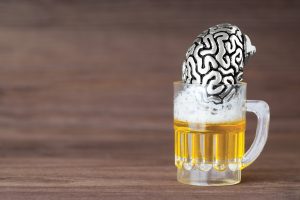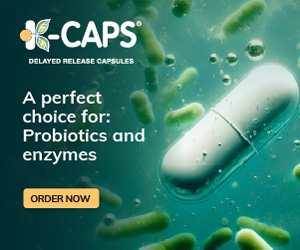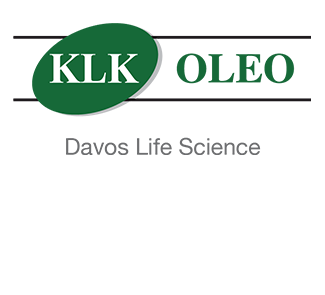The Mediterranean diet, with its rich variety of fresh fruits, vegetables and olive oils, is likely the most widely promoted and scientifically proven healthy lifestyle in the world.
An increasing volume of scientific research reveals that a key reason for the Mediterranean diet’s proven health benefits is its richness in antioxidant compounds known as phenols and polyphenols. They are present in a range of Mediterranean foods such as grapes, berries, red wine and extra virgin olive oil.
It is believed that these compounds are a key factor contributing to the Mediterranean region’s low incidences of coronary heart disease, obesity, hypertension, inflammatory conditions and certain cancers. They have also been directly linked to longer life expectancy.
According to research published in Nutrition Research Reviews in 20051, the Mediterranean diet’s healthy effects can be attributed not only to the high relationship between unsaturated and saturated fatty acids in olive oil, but also to the antioxidant property of its phenolic compounds.
Due to the fact that many polyphenols are water-soluble and not fat-soluble, most of the olive tree’s polyphenols are lost during the oil making process.
Different parts of the olive tree have been used for centuries throughout the Mediterranean for everything from food to medicine. Presently, research continues to emerge supporting some of the plant’s traditional usages, as well as unveiling some unique attributes.
Studies are showing that olive leaf complex (water-extracted from the olive tree leaves, not the fruit) contains many times the total polyphenols of even the freshest extra virgin olive oils.
Olive leaf complex is a rich source of some of the most important phenolic compounds on earth, such as oleuropein, hydroxytyrosol, tyrosol, rutin, luteolin, catechin and apigenin, which are believed to be responsible for most Of the leaf ’s pharmacological effects.Olive leaf complex also contains various trace elements vital to good health such as selenium, chromium, iron, zinc, vitamin C, beta-carotene and a wide range of amino acids.
Most Recent Science
• Effects on blood pressure. One study, published in the French Journal de Pharmacie de Belgique found that patients taking olive leaf extract (OLE) daily for three months experienced a significant drop in blood pressure. The extract was well tolerated with no reported side effects.2
• May slow bone loss. A study in Spain found that oleuropein, highly abundant in olive tree products included in the traditional Mediterranean diet, could prevent age-related bone loss and osteoporosis. The potential bone health benefits of the olive polyphenol, oleuropein, are related to its ability to stimulate cells responsible for bone formation, according to the new study that explains the mode of action of the compound.3
• Olive leaf complex compounds have synergy. A Korean study was made to assess the antioxidant and antimicrobial activities of both the individual and combined phenolics in OLE.Results showed that the combination of OLE phenolics possessed antioxidant and antimicrobial activities. This study indicated that OLE might be a valuable bioactive source, and would seem to be applicable in both the health and medical food.4
Several other research studies have recorded and reported on the effectiveness of OLE in other clinical trials.
• The New York University School of Medicine has completed definitive tests that show that OLE is able to change the pathways of HIV-type infections and may even reverse these conditions.
• The University of Durban-Westville in South Africa has concluded that one of the benefits of OLE is that it decreases hypertension, especially in cases where the condition is related to saltsensitivity.
These very recent studies are in addition to the scores of studies on the cardiovascular, anti-microbial and immune effects, which have been done over the past 20-plus years.
How Olive Leaf Complex Works
Blood Pressure—Olive leaf complex is a vasodilator, which means that it relaxes The walls of the arteries thereby allowing a larger volume of blood to flow more freely through the arteries.This, in turn, reduces the pressure of the blood flow.
Microbes—Olive leaf complex contains compounds that are lethal to a range of bacteria and viruses. The exact mechanism for these effects varies but includes interference with critical amino acid production essential for viral/bacterial replication, inactivation of viruses/bacteria through prevention of their budding or assembly at the cell membrane, and direct penetration of the cell walls in bacteria. Olive leaf compounds can also stimulate a process called phagocytosis, an immune system response in which cells act like little “PacMen,” ingesting harmful microorganisms and foreign matter.
Cell Protection—Olive leaf complex’s range of phenolic compounds have powerful antioxidant free radical scavenging effects. These include oleuropein, hydroxytyrosol, verbascoside and luteolin. These compounds neutralize free radicals thereby reducing the damage that those free radicals would have done to our healthy cells.
Anti-Inflammatory—A number of compounds in fresh OLEs, which include oleuropein, hydroxytyrosol, tyrosol, caffeic acid and apigenin, inhibit the inflammatory mediators nitric oxide and prostaglandin E2 thereby offering excellent reduction of inflammation.
Olive Waste Issues
Published in the journal Food Chemistry, research found that antioxidant- rich solutions could be extracted from olive oil mill waste, and could then be used to enrich antioxidant levels of foods and oils. The treatment and disposal of olive oil mill waste is one of the most serious environmental problems in Mediterranean countries, as many of its constituents are not easily degradable.
“Phenolic extracts from olive oil mill waste can be used as alternatives to synthetic antioxidants in order to increase the stability of foods,” wrote the researchers, led by Evangelos Lazos at the Technological Educational Institution of Athens, Greece.
The new techniques that separate virgin olive oil by recycling the vegetation water of processed olives greatly decreases the volume of plant waste and disposal problems, and releases a by-product with between 10 and 100 Times more of the antioxidants than in the olive oil itself.
Hydroxytyrosol was the major phenolic compound detected in the extract, while flavonoids such as luteolin, hesperidin, catechin, cyanidin glycosides and various phenolic acids were also identified.
Low-Cost Enrichment
The study concluded that olive oil mill waste is a “low-cost, renewable and abundant source of phenolic antioxidants” that could be used as functional ingredients.
The process could be used to add antioxidants to oils with lower antioxidant content, and potentially adding oxidative stability to functional foods— preventing off-flavor formation in omega-3 enriched foods.
“Phenolic extracts from olive oil mill waste can be used as alternatives to synthetic antioxidants in order to increase the stability of foods by preventing lipid peroxidation, and protect living systems from oxidative damage by scavenging oxygen radicals,” stated the researchers.
In addition, olive mill waste water extract and its main constituent, hydroxytyrosol, has shown brain protection benefits.5
References:
1 Nutrition Research Reviews.2005;18(1):98-112.
2 Cherif R, et al. “A clinical trial of a titrated olea extract in the treatment of essential arterial hypertension,” J Pharm Belg.1996;51(2):69-71.
3 R. Santiago-Mora, A. Casado-Díaz, M.D. De Castro and J. M. Quesada-Gómez.
“Oleuropein enhances osteoblastogenesis and inhibits adipogenesis: the effect on differentiation in stem cells derived from bone marrow.” Osteoporos International, May 2010 (published online ahead of print).
4 “Antioxidant and antimicrobial activities of individual and combined phenolics in Olea europaea leaf extract.” Lee O.H., LeeB. Y., Department of Biomedical Science, CHA University, Seongnam 463-836, Republic of Korea.
5 S. Schaffer, W.E. Muller, G.P. Eckert.“Cytoprotective effects of olive mill waste water extract and its main constituent hydroxytyrosol in PC12 cells”.
Pharmacological Research. (published online ahead of print).
Resources:
• Barlean’s
• Ecuadorian Rainforest
• Food Chemistry
• Source Naturals/Planetary Herbals




![[Extra! Extra!] Talking Heart Health With Carl Germano CNS, CDN](https://vitaminretailer.com/wp-content/uploads/2024/01/Heart-Health-300x200.jpg)







